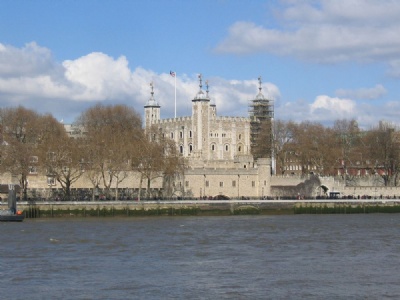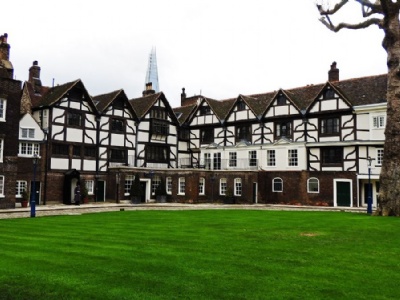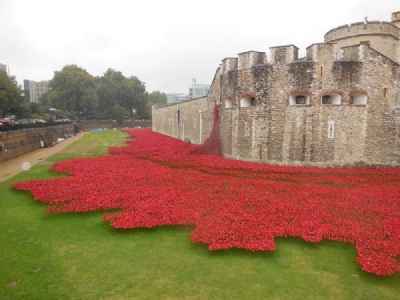London Tower
In central London and next to the north bank of Themes river lies the Towern Royal Castle. It began to be built in the 1000s by William the Conqueror and served as both a residence for royalties and as a castel in the event of an enemy attack of the ruler. Through the centuries, the castle has been expanded with several defense rings and towers depending adjusted after situation. The monarchs also kept treasures within the castle walls, most famous are the so-called crown jewels.
The Towern also has a history as a prison and execution place for enemies of the monarch. Both enemies of the state and royal relatives saw themselves imprisoned and executed within the castle walls. After execution, usually by beheading, the bodies were quickly buried under the castle’s chapel. Being sent to the Towern as a prisoner was proof that one was considered an important and dangerous enemy. Myths and legends about those executed flourish and are preserved and create a mystery around the castle. For intance, Henry VIII’s wife Anne Boleyn, who was executed on the order of her husband is said to haunt the place where she was executed. At the turn of the last century, the Towern opened up to visitors, but its function as a garrison, prison and execution site coexisted.
During First World War 11 people were imprisoned and executed. These had been guilty of spying and revealing British military secrets on German behalf. Shortly before the Second World War started in September 1939, Towern was closed for visitors. The possibility of German invasion could not be ruled out and the Towern regained its original function as a defense bastion. Treasures were moved from the castle in order not to be destroyed or looted by the Germans. But no german invasion came, but the Towern was damaged by German air raids in 1940 and 1941.The Towern was also used to initially imprison and interrogate prisoners of war before being sent on to other prisoner-of-war camps. As in the First World War, spies were also imprisoned and executed during Second World War.
The most famous prisoner in the Towern during the Second World War was Adolf Hitler’s deputy Rudolf Hess. Hess had been with Hitler since the beginning of the Nazi party and was the one who created the myth around Hitler as the savior of Germany. Hess was a devoted and loyal admirer of Hitler but came after the outbreak of war to lose Hitler’s favor more and more. This may have contributed to the decision made by Hess in the spring of 1941.
On May 10, 1941, Hess took off with a Messerschmitt BF 110 from the airport in Augsburg with destination Scotland. Hess, a trained pilot, managed to reach his target without incident, parachuted and let the plane crash. Hess landed on a field just south of Glasgow and was first taken by a local farmer who in turn contacted the home guard who came and arrested Hess.
After a suicide attempt in June 1942, he was moved to a hospital in Wales where he remained for the rest of the war. In 1946, he was sentenced to life in prison in the Nuremburg trials and transferred with other convicted war criminals to Spandau prison in Berlin. Hess died in August 1987, as the only remaining prisoner in Spandau for 21 years.
Why Hess flew to Scotland is still disputed. It is likely that he had an ambition to bring peace with Britain as Hitler’s deputy. This at a time when the attack on the Soviet Union was imminent. A peace agreement with Britain would have meant that Germany avoided a two-front war. The British, however, were not at all interested in this, and he was tucked away for the rest of the war.
Current status: Preserved with museum (2014).
Address: The Tower of London, London EC3N 4AB.
Get there: Metro to Tower Hill station.
Follow up in books: Manvell, Roger, Fraenkel, Heinrich: Hess (1973).



What characterizes the Towern is the White Towers (White Tower), which with its four towers stands out and is one of several famous landmarks in London. The Towern consists of so much more than just the White tower and can be well worth a visit. The Queen’s house is not accessible to visitors as it is the residence of the governor of the Tower and his family.